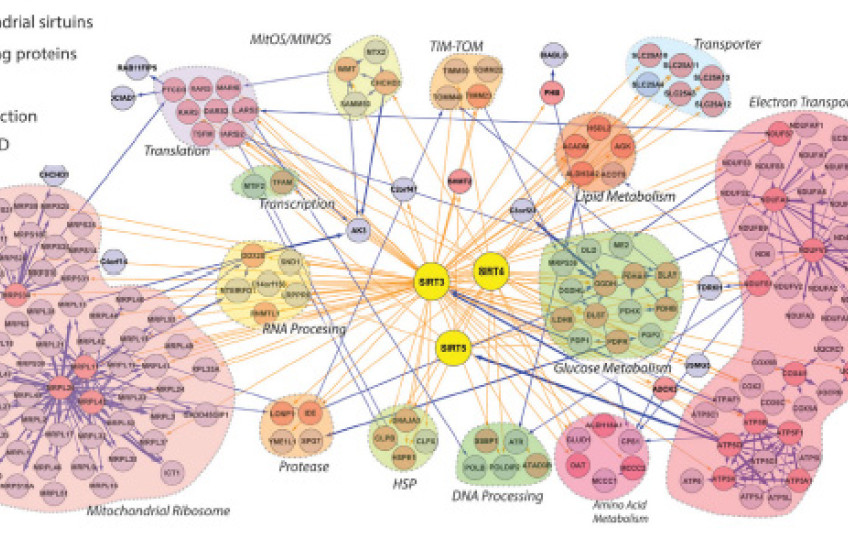As proteins go, the sirtuins are the cool kids, attracting attention for their connection to aging and age-related disorders. Sirtuins’ home base, mitochondria, is also known for its role in health and disease.
Marcia Haigis and her team of Harvard Medical School scientists work at the basic level, asking one deep molecular question: Which proteins are talking to sirtuins in a cell?
To find out who’s sitting at the sirtuins’ table, the scientists created a map of protein interactions—the interactome—of sirtuins found in mitochondria, the cell’s source of energy. They then used that map to reveal how one particular sirtuin works with its protein partners to keep the cell’s powerhouse humming.
Haigis, HMS associate professor of cell biology, and her colleagues charted constellations of 89 proteins to see which three members of the sirtuin family (SIRT3, SIRT4 and SIRT5) bind most tightly. That approach led them to SIRT3 and the critical role it plays in regulating the health of mitochondria.
Damage control is crucial to cells and their components, setting in motion a process that breaks down faulty parts. But SIRT3, it turns out, intervenes in a different way. It rapidly responds to mitochondrial stress without hitting the self-destruct button.
In their paper, published in Cell, the scientists provide a roadmap for future studies and show how they used it to discover this response to stress in the mitochondria.
“Knowing what the protein-binding landscape looks like for three mitochondrial sirtuins gives us—and the field—a really rich resource,” Haigis said. “The interactome led us to look at stress response, and the more we saw, the clearer it became that this response is actually regulatory feedback.”
Inside cells, mitochondria must maintain the proper chemical gradient on both sides of an inner wall where ATP, the cell’s fuel source, is generated. When this equilibrium, called membrane potential homeostasis, is upset, its pH level nosedives and the membrane potential sends a signal to destroy the mitochondria.
Haigis and her team discovered that SIRT3 and its binding partner ATP5O instead respond to a drop in pH by flipping the chemical tags on other proteins and changing whom they talk to in the mitochondria. SIRT3 and ATP5O can toggle these chemical interactions—and fuel utilization—in response to cellular stress until the proper balance is restored.
“This is a rapid response to stress, and from a cell biology point of view, it’s more efficient than always degrading damaged mitochondria,” Haigis said.
And it’s one more cool factor for sirtuins.
The Haigis lab collaborated with the labs of Wade Harper, the HMS Bert and Natalie Vallee Professor of Molecular Pathology, and Steven Gygi, HMS professor of cell biology.
The work was supported by funding from National Institutes of Health grants R01 DK103295, U41HG006673 and R37 NS083524; Takeda Pharmaceuticals Co. Ltd.; the Glenn Foundation for Medical Research; and the European Molecular Biology Organization.
Haigis and Harper are scientific advisory board members of Takeda Oncology.



